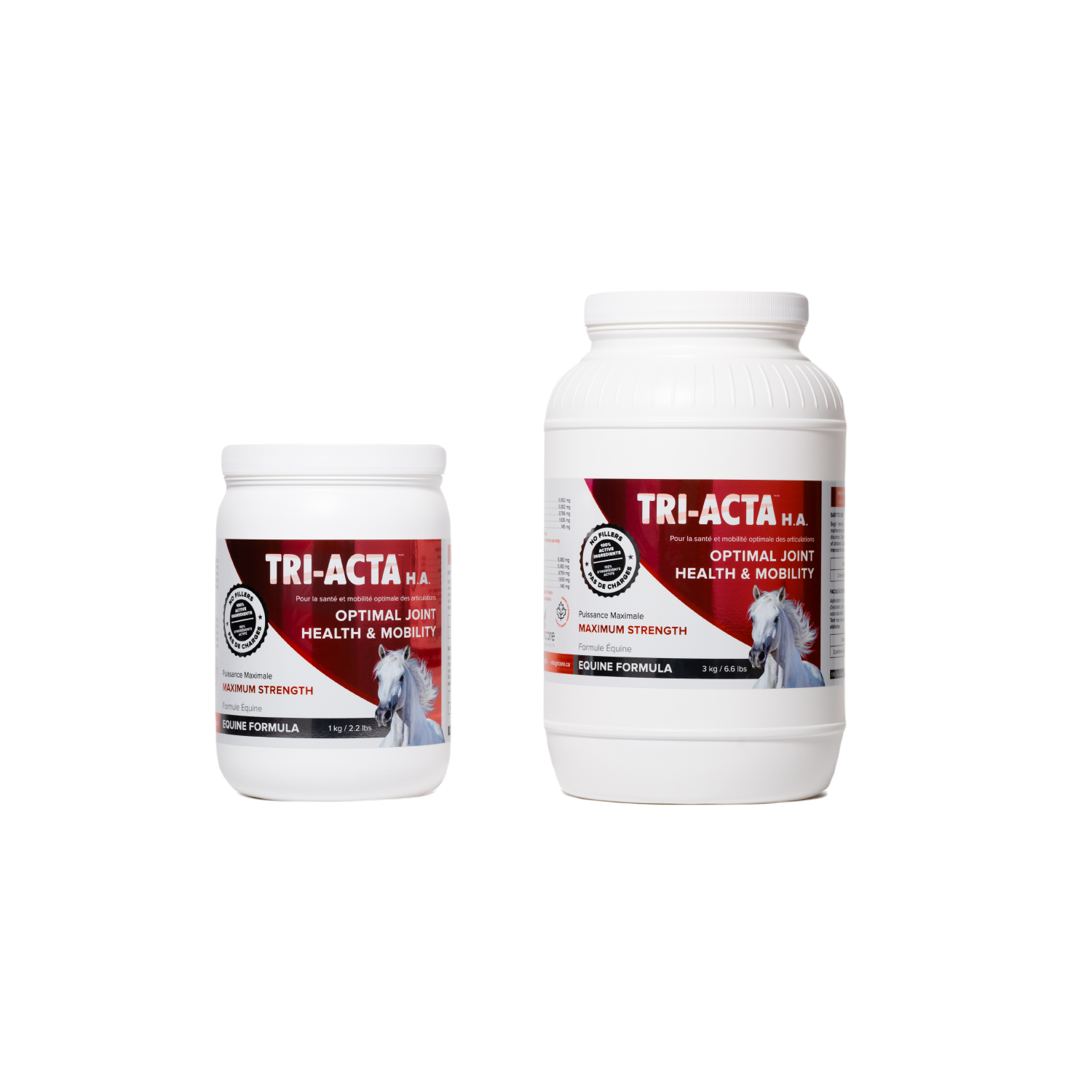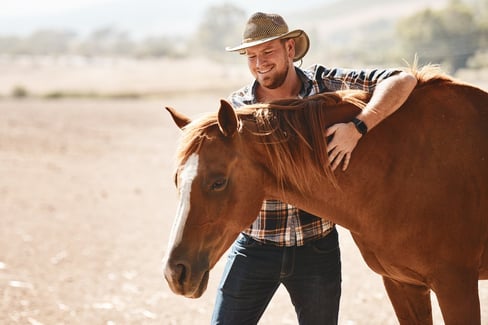Table of Contents
Horses are resilient creatures, able to withstand and heal from various injuries and ailments. However, there are times when horse surgery is necessary to care for your equine.
Equine surgery and medicine is a highly specialized field requiring careful consideration of logistics and technique. It’s tough to get an animal that weighs up to 1,200 lbs (544 kg) anesthetized and positioned correctly for surgery (usually on its back). To compound the problem, horses (or any animal that weighs over a thousand pounds) should not lay down unconscious for a long period of time, as it increases the chance that their lungs will deflate under their body weight, and muscle and nerve damage becomes a risk. Horse surgery requires a team of people with highly specialized skills working seamlessly together to get the desired result.
Despite the risks and logistics required for equine surgery, there are times when it is the best option to save the horse’s life or fix an issue that they have to give them a better quality of life.
In this article, we explore the different types of horse surgery, including causes, costs, care, and prevention tips.
Understanding Common Horse Surgery [Causes, Costs, & More]
Horse surgeries are essential for addressing a variety of health issues that can affect these magnificent animals. From digestive problems to respiratory issues, understanding the different types of horse surgeries, their causes, and associated costs can help horse owners make informed decisions about equine healthcare.
|
Horse Surgery Type |
Causes Summary |
Procedure |
General Cost (USD) |
|
Colic |
Severe abdominal pain due to intestinal blockage, twisting, or impaction; caused by diet changes, lack of water, or ingesting foreign objects. |
Involves making an incision in the abdomen to correct the cause, such as removing blockages or repositioning intestines. |
$5,000 to $10,000+; up to $20,000 with full care |
|
Tie-Back |
Laryngeal hemiplegia, causing partial airway obstruction due to paralyzed laryngeal muscles. |
Surgeon places a suture to "tie back" the paralyzed cartilage; may also involve removing vocal cords to increase airflow. |
$2,000 to $4,000 |
|
OCD Surgery |
Developmental disorder affecting joint cartilage and underlying bone; caused by rapid growth, dietary imbalances, genetics, hormonal imbalances, or trauma. |
Arthroscopy to remove or repair loose cartilage fragments and clean up the affected joint. |
$2,500 to $4,000, varying with severity |
|
Basket |
Used to repair fractures, typically in legs, by inserting a wire basket to stabilize broken bones; also used for wobbler syndrome. |
Involves placing a titanium "basket" around the fracture site to hold bones in place while they heal. |
Up to $15,000 |
|
Hernia |
Hernias from congenital factors or trauma; types include umbilical and inguinal hernias. |
Repairing the muscle wall defect to prevent internal organs from protruding; may involve castration for scrotal hernias. |
$500 to $1,000 |
|
Cryptorchid |
One or both testicles fail to descend into the scrotum, leading to behavioral issues and health problems. |
Locating and removing the retained testicle(s) through an incision in the abdomen or inguinal region. |
$1,200 to $3,000 |
|
Stifle |
Issues from ligament injuries, meniscal tears, or osteochondrosis; also caused by lack of exercise and old age. |
Arthroscopy to repair or remove damaged tissues within the stifle joint; may involve cutting the medial patella ligament. |
Up to $3,000 with additional costs |
|
Eye Ulcer |
Eye ulcers from trauma, infection, or foreign objects, leading to pain and potential vision loss. |
May involve debridement of the ulcer, conjunctival grafts, or corneal transplants to promote healing and restore vision. |
$1,500 to $3,000 |
1. Colic Surgery
Causes: Horse colic surgery is often required for severe cases of abdominal pain due to intestinal blockage, twisting, or impaction. Colic can be caused by various factors, including diet changes, lack of water intake, or ingesting foreign objects.
Procedure: The surgery involves making an incision in the horse's abdomen to locate and correct the cause of the colic. This might include removing blockages, repositioning the intestines, or resecting damaged portions.
Costs: Horse colic surgery can range from $5,000 to $10,000 or more, depending on the complexity and length of the procedure. One source says that the entire care required for equine colic surgery, including recovery and continuity of care of the equine, can cost as much as $20,000 USD.
2. Tie-Back Surgery
Causes: Equine tie-back surgery is performed to correct laryngeal hemiplegia, a condition where the horse's airway is partially obstructed due to paralysis of the laryngeal muscles.
Procedure: The surgeon places a suture to "tie back" the paralyzed cartilage, which opens up the airway, allowing the horse to breathe more easily. In some horses, the vocal cords are also removed (called a ventriculocordectomy) to increase airflow and reduce noise from breathing.
Costs: Tie-back surgery horse typically costs between $2,000 and $4,000 USD, according to forum discussions about the surgery and veterinary sources.
3. OCD Surgery
Causes: Osteochondritis dissecans (OCD) is a developmental disorder affecting joint cartilage and underlying bone, leading to pain and lameness in horses. It is often caused by:
- Rapid growth of during the fetal bone development phase
- Diets not correctly balanced in trace minerals, especially copper
- Genetics (the condition may be inherited)
- Hormonal imbalances, particularly the thyroid and insulin
- Trauma to the joints due to excessive exercise or other means
OCD in horses can cause clinical signs (symptoms of the disease) in 5-25% of horses that have the condition and usually presents in young horses. What happens with OCD is that the malformed cartilage has irregular thickness and is weaker compared to the cartilage present in normal joints. As a result, the OCD-affected joint is more prone to inflammation, and the cartilage may even break off and float around the joint, especially in areas where the cartilage is quite thin.
Giving your horse TRI-ACTA, a preventative joint supplement, can help reduce the clinical signs of OCD by strengthening the cartilage in the joints. This is done through a combination of glucosamine, Methylsulfonylmethane (MSM), and chondroitin. After the initial loading dose, just one dose a day can make a huge difference in your equine’s joint health.
TRI-ACTA H.A. for Equine
Our maximum strength formula is perfect for horses that are ageing, experiencing arthritis and stiffness, are in training and competition, or under a heavy workload.

Procedure: OCD surgery horse involves arthroscopy to remove or repair the loose cartilage fragments and clean up the affected joint.
Costs: The cost of OCD surgery for horses generally ranges from $2,500 to $4,000. However, online sources indicate that the surgery cost can vary widely depending on how severe the condition is and how many joints it affects.
4. Basket Surgery
Causes: Basket surgery horse is used to repair fractures, typically in the horse's legs, by inserting a wire basket to stabilize the broken bones. Basket surgery horse can be used to correct a condition called wobbler syndrome, also called Cervical Vertebral Compressive Myelopathy (CVCM). This condition affects a horse’s neurologic and musculoskeletal systems by causing the narrowing of the spinal canal due to malformation, which leads to spinal cord compression. The compression can cause spasticity, ataxia, and a general lack of coordination.
Procedure: This surgical method involves placing a titanium "basket" around the fracture site to hold the bones in place while they heal.
Costs: The cost of horse basket surgery can vary widely depending on the underlying need for the surgery (whether wobbler syndrome or another condition) and the scope of the surgical procedure needed to correct the problem. One online discussion between horse owners indicates that the surgery can cost as much as $15,000 USD.
5. Hernia Surgery
Causes: Hernias in horses can occur congenitally or as a result of trauma, where an internal part of the body pushes through a weakness in the muscle or surrounding tissue wall.
Types of hernias that may occur in horses include:
- Umbilical hernia, which typically occurs in young horses during the first six weeks after they are born. The condition can be recognized by a round, swollen ring in the abdominal area present beneath the skin.
- Inguinal hernia, which happens when the inguinal ring (a muscle that facilitates gonadal descent, aka the testes descending in males or the movement of the ovaries in females) becomes enlarged or weakened. In male horses, this condition is often called a scrotal hernia, as it is noticeable around the horse’s scrotum. In female horses, the inguinal hernia is present near the groin area. This condition can occur in young and mature horses.
Procedure: Hernia surgery involves repairing the muscle wall defect to prevent internal organs from protruding. For scotial hernias, castration is usually the solution.
Costs: The cost of horse hernia surgery varies widely depending on the severity of the condition and the complexity of fixing it. One source indicates that it can cost between $500-$1000 USD.
6. Cryptorchid Surgery
Causes: Cryptorchidism is a condition where one or both of the horse’s testicles fail to descend into the scrotum, leading to behavioral issues and potential health problems.
Procedure: Cryptorchid horse surgery, or "rig" surgery, involves locating and removing the retained testicle(s) through an incision in the abdomen or inguinal region.
Costs: This surgery typically ranges from $1,200 to $3,000 depending on the region where the surgery is completed and the costs associated with veterinary care (which can differ depending on the horse’s ongoing condition).
7. Stifle Surgery
Causes: Stifle issues can arise from ligament injuries, meniscal tears, or osteochondrosis, leading to lameness and pain in the horse's hind legs. Locking stifle in horses can also be a result of lack of exercise and old age.
Procedure: Stifle surgery often involves arthroscopy to repair or remove damaged tissues within the stifle joint. The procedure traditionally involves cutting through the medial patella ligament (kneecap ligament) to prevent it from catching and causing the locking to occur. TRI-ACTA H.A. is a great supplement to incorporate into your horse’s diet to help with healing after surgery and maintain joint health. The combination of two types of glucosamine, chondroitin, and methylsulfonylmethane (MSM), as well as hyaluronic acid, helps address the underlying cause of your horse’s stifle by ensuring their body has the right components to heal over time.
Costs: The cost of stifle surgery is another one that can vary greatly depending on the severity of the horse’s condition. One source suggests that stifle surgery horse can cost as much as $3,000 USD if you add up the lab, x-ray, medication, and other costs.
8. Horse Eye Ulcer Surgery
Causes: Eye ulcers can be caused by trauma, infection, or foreign objects, leading to pain and potential vision loss.
Procedure: Horse eye ulcer surgery may involve debridement of the ulcer, conjunctival grafts (involves utruing healthy donor tissue over the damaged area of the cornea for structural support and to support healing), or corneal transplants to promote healing and restore vision.
Costs: The surgery typically costs between $1,500 and $3,000, according to a variety of online sources.
Care and Prevention for Equine Surgery

Ensuring the health and well-being of horses before, during, and after surgery is crucial for successful recovery and long-term health. Proper care and preventive measures can significantly reduce the risk of complications and promote faster healing.
1. Pre-Surgical Care
- Balanced Diet: Ensure the horse receives a diet rich in essential nutrients to support overall health and boost immune function.
- Joint Supplements: Prior to surgery, incorporating joint supplements like TRI-ACTA H.A. into your horse’s diet helps to strengthen the joint structures, giving your horse a better chance of a successful surgical outcome.
- Hydration: Maintain adequate hydration levels to ensure the horse is well-hydrated before surgery.
- Appropriate Exercise: Provide regular, moderate exercise to maintain your horse’s muscle and physical fitness without causing additional strain or injury.
- Conditioning Programs: Implement conditioning programs tailored to the horse's needs and surgery requirements.
- Familiar Environment: Keep the horse in a familiar and comfortable environment to reduce stress.
- Calming Measures: Use calming measures such as natural supplements or calming techniques if necessary.
2. Post-Surgical Care
- Close Observation: Monitor the horse closely for any signs of complications, such as infection, swelling, or discomfort.
- Follow-Up Checks: Schedule regular check-ups with the veterinarian to monitor recovery progress.
- Medication: Administer prescribed pain relief medications to manage pain and ensure the horse is comfortable.
- Comfort Measures: Ensure the horse's environment is quiet and comfortable to aid in pain management.
- Controlled Exercise: Gradually reintroduce the horse to activity under veterinary guidance, starting with controlled, low-intensity exercise.
- Rehabilitation Programs: Follow a structured rehabilitation program to restore strength and mobility without overloading the surgical site.
Joint Supplements to Help With Successful Surgical Outcomes
Given that many horse surgical procedures have to be performed as a result of joint issues, whether with the bones themselves or the structures surrounding them, giving your horse a daily joint supplement pre and post surgery is a great idea to help boost their joint health. TRI-ACTA HA can strengthen the joint structures pre-surgery, which can help ensure a successful outcome. Post-surgery, it can expedite the healing and reduce the chances of developing post-traumatic arthritic conditions later in life.
TRI-ACTA H.A. for Equine is formulated with 100% natural ingredients that work together to support your horse’s joint health, as outlined in the table below:
|
TRI-ACTA H.A. For Equine Ingredient |
Benefit |
|
Glucosamine (HCl and Sulfate) |
|
|
Methylsulfonylmethane (MSM) |
A naturally occurring anti-inflammatory that provides pain relief and swelling reduction. |
|
Chondroitin Sulfate |
In addition to glucosamine, chondroitin sulfate helps repair damaged cartilage and strengthens the muscles and ligaments around your horse's joints. |
|
Hyaluronic Acid |
Synovial fluid in your horse's joints helps facilitate movement, and hyaluronic acid enhances its viscosity for smoother motion. |
By giving your horse TRI-ACTA H.A. daily, you’ll be supporting their joint health so that they can run, gallop, and trot pain-free.
TRI-ACTA H.A. for Equine
Our maximum strength formula is perfect for horses that are ageing, experiencing arthritis and stiffness, are in training and competition, or under a heavy workload.

Conclusion
Horse surgery is sometimes necessary to address various health issues and improve the quality of life for these resilient animals. Despite the complexities and risks associated with equine surgery, advancements in veterinary medicine and techniques have made these procedures more successful and safer for horses. Understanding the types of surgeries, their causes, procedures, and costs can help horse owners make informed decisions.

Pre-surgical and post-surgical care are crucial for ensuring successful outcomes and speedy recovery. Providing a balanced diet, maintaining hydration, reducing stress, and following a structured exercise and rehabilitation program are essential components of effective care. Regular veterinary check-ups, proper nutrition, and a safe environment are key to preventing future health issues.
In addition to these care measures, incorporating joint supplements like TRI-ACTA H.A. for Equine can significantly enhance your horse’s joint health. Ingredients such as glucosamine, chondroitin sulfate, MSM, and hyaluronic acid work together to support joint lubrication, reduce inflammation, repair damaged cartilage, and improve overall mobility.
Purchase TRI-ACTA H.A. online, or learn where to buy at a store near you.
Newsletter Signup
Subscribe to our newsletter to receive the latest news and exclusive offers.
.jpg?height=2000&name=Cliick_Integricare-DISPLAY-REVISEDV2%20(1).jpg)
Proactive & Therapeutic Joint Supplements
When given daily, Integricare joint supplements recover bone and joint injuries faster and help prevent mobility injuries from happening in the first place.










